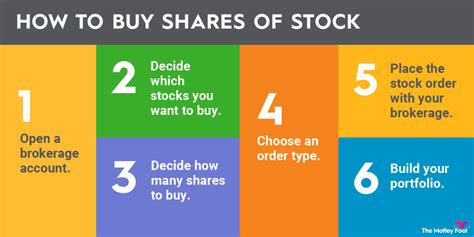How To Buy Stock: A Beginner's Guide to Investing
Investing in the stock market can seem daunting, but understanding the basics makes it accessible to everyone. This guide will walk you through the process of buying stock, from choosing a brokerage to placing your first trade.
Choosing a Brokerage Account
The first step is selecting a brokerage account. A brokerage is a company that facilitates the buying and selling of securities. Many options exist, each with its own fees, features, and user interface. Consider these factors when making your choice:
Key Factors to Consider When Choosing a Brokerage:
- Fees: Look for brokerages with low commissions or fee-free trading. Some charge fees for account maintenance, inactivity, or specific services.
- Investment Choices: Ensure the brokerage offers access to the types of investments you're interested in (stocks, bonds, ETFs, etc.).
- User Interface: A user-friendly platform is crucial, especially for beginners. Consider ease of navigation, mobile app availability, and research tools.
- Educational Resources: Many brokerages offer educational materials, webinars, and research tools to help you learn about investing.
- Account Minimums: Some brokerages require minimum account balances to open an account.
Opening Your Brokerage Account
Once you've chosen a brokerage, the account opening process is generally straightforward. You'll typically need to provide:
- Personal Information: Name, address, Social Security number, date of birth.
- Financial Information: Bank account details for funding your account.
- Investment Experience: You'll likely be asked about your investment experience and risk tolerance.
Funding Your Account
After your account is approved, you'll need to fund it with money to buy stocks. Most brokerages offer various funding methods, such as:
- Bank Transfers: The most common method, typically taking a few business days.
- ACH Transfers: Electronic transfers that can be faster than bank transfers.
- Wire Transfers: Instant transfers, but often come with fees.
Researching Stocks
Before buying any stock, thorough research is essential. Consider these factors:
Understanding Company Fundamentals:
- Financial Statements: Analyze a company's income statement, balance sheet, and cash flow statement to understand its financial health.
- Industry Analysis: Research the company's industry to understand its competitive landscape and growth potential.
- Management Team: Assess the quality of the company's management team and their track record.
Placing Your First Trade
Once you've researched a stock and decided to buy, placing your order is usually a simple process:
Steps to Placing a Stock Order:
- Search for the Stock: Find the stock ticker symbol (e.g., AAPL for Apple).
- Enter Your Order: Specify the number of shares you want to buy and the order type (market order, limit order, etc.).
- Review and Confirm: Double-check your order details before submitting it.
Understanding Order Types
Different order types offer varying degrees of control over the price and timing of your trade:
- Market Order: Buys or sells at the best available price immediately.
- Limit Order: Buys or sells only at a specified price or better.
- Stop-Loss Order: Automatically sells a stock if it falls below a certain price, limiting potential losses.
Monitoring Your Investments
After buying stock, regularly monitoring your investments is crucial. Stay informed about company news, financial performance, and market trends. Regularly reviewing your portfolio helps make informed decisions about buying, selling, or holding your investments.
